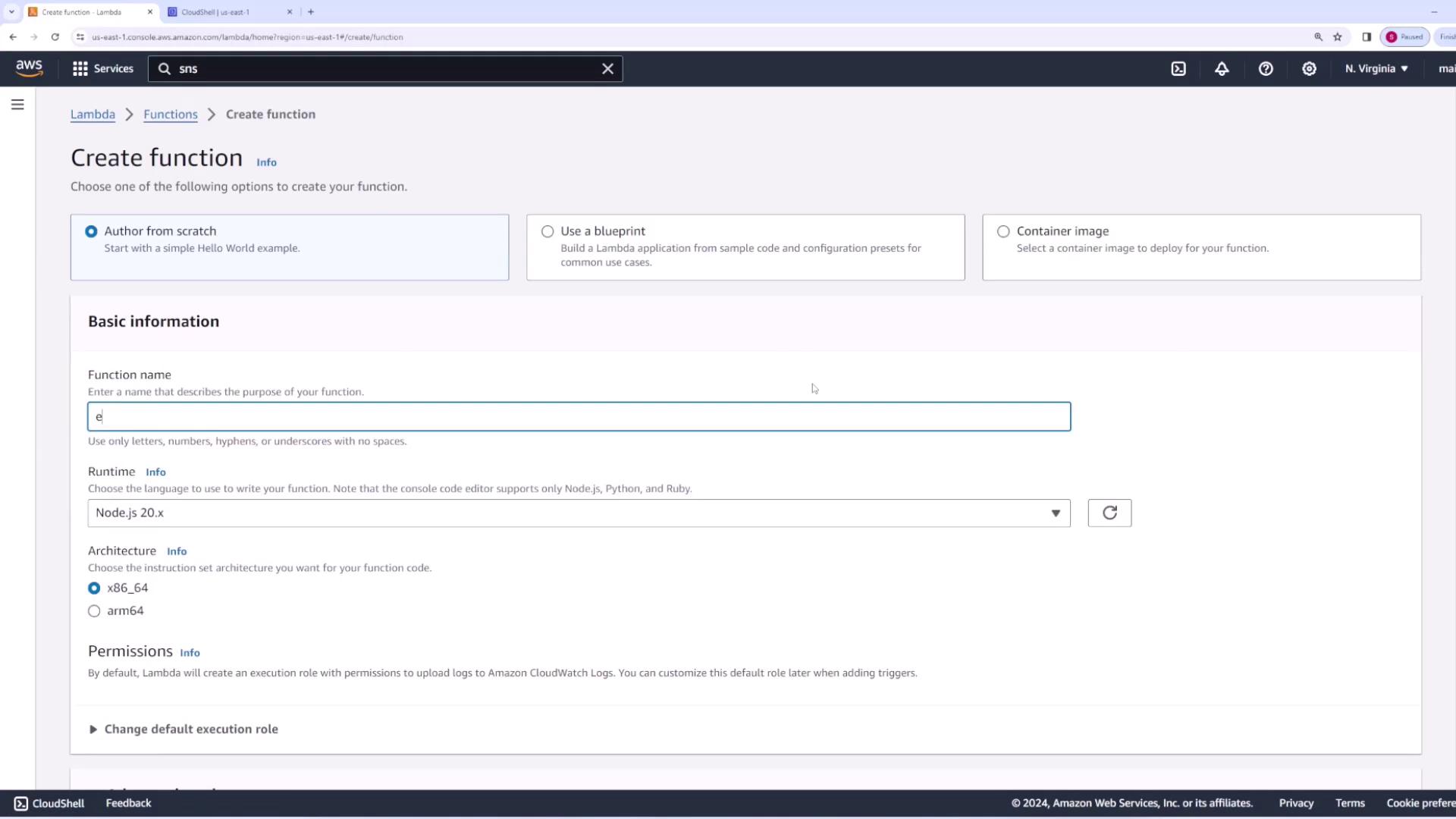AWS Certified Developer - Associate
Serverless
Environment Variables Demo
In this article, we demonstrate how to configure environment variables for an AWS Lambda function. Environment variables are typically used to store configuration details—such as database credentials—that may vary between environments.
Creating the AWS Lambda Function
Begin by creating a new AWS Lambda function named "env demo". During the setup process, you will configure essential settings including the function name, runtime, and permissions.

Accessing Environment Variables in Code
Within your Node.js AWS Lambda function, you can access environment variables using process.env. In the example below, the code retrieves an environment variable named PASSWORD and returns its value as part of the response.
export const handler = async (event) => {
const password = process.env.PASSWORD;
const response = {
statusCode: 200,
body: JSON.stringify("Password is: " + password),
};
return response;
};
When the function is first invoked without the environment variable set, the output will confirm that the variable is undefined:
{
"statusCode": 200,
"body": "\"Password is:undefined\""
}
Configuring Environment Variables
To configure the environment variable, follow these steps in the AWS Lambda console:
- Navigate to the "Environment variables" tab.
- Click the Edit button.
- Add a new environment variable with the key
PASSWORDand the valuepassword123.

After saving and deploying the changes, invoke the function again. The updated configuration will now provide the set password as part of the function's output.
The revised invocation returns:
{
"statusCode": 200,
"body": "\"Password is: password123\""
}
Note
Make sure to update and deploy your function after changing environment variables to ensure the new configuration is applied.
Sample Function Logs
Below are sample logs generated from a successful function invocation, confirming that the environment variable is being correctly utilized:
Function Logs
START RequestId: c305e2f7-f5c5-423a-a6c6-d862563c454f Version: $LATEST
END RequestId: c305e2f7-f5c5-423a-a6c6-d862563c454f
REPORT RequestId: c305e2f7-f5c5-423a-a6c6-d862563c454f Duration: 12.69 ms Billed Duration: 13 ms Memory Size: 128 MB Max Memory Used: 64 MB Init Duration: 150.02 ms
This confirms that your AWS Lambda function is successfully retrieving and utilizing the environment variable.
Additional Resources
For further details on AWS Lambda and environment variable configuration, refer to the following resources:
Watch Video
Watch video content